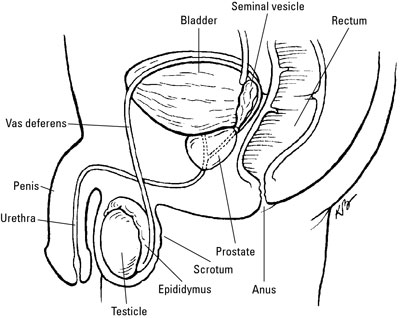Prostate cancer is the most common cancer in men in the United States. Some scientists think vitamin D may help protect against prostate cancer. Prostate cancer generally occurs in men over the age of 50; however, it is slow growing in most men and takes a lifetime to develop.
Prostate cancer has been found in the prostate gland of more than 80 percent of men over the age of 70 who died from an entirely unrelated disease. Some doctors are concerned that the major test for detecting prostate cancer, the prostate specific antigen or PSA test, is overused. Its major weakness is that it not only picks up prostate cancer, but it also detects another prostate condition that isn’t cancer called benign prostatic hypertrophy (BPH).
Unfortunately, when men get a positive PSA test, many of them may have had radical prostatectomy (surgical removal of the prostate) and then suffered from problems with erections and urinary incontinence.
Dr. Richard Ablin, who developed the PSA test, thinks that prostate cancer is a disease that many men can live with and that can be managed. They’re concerned that the side effects of prostate cancer removal (prostatectomy) aren’t worth it.
Prostate cancer risk factors and symptoms
Prostate cancer occurs in the prostate gland, a tiny gland that surrounds the urethra, the tube that carries urine and semen through the penis out of the body. The prostate is only 20 grams in size, and its function is to make seminal fluid to carry sperm from the testicles. The following figure shows the location of the prostate gland.

Prostate cancer is linked to many risk factors beyond gender, including the following:
Age: The older you are, the more likely you are to be diagnosed with prostate cancer.
Race: African Americans are 60 percent more likely to develop prostate cancer than Caucasians.
Family history: Men whose fathers or brothers develop prostate cancer are more likely to develop it.
Smoking: This bad habit is probably a risk factor for more aggressive prostate cancer.
Most prostate cancers cause no symptoms, but when they’ve grown to become clinically important, they may cause these issues:
Pain in the pelvic area
Difficulty urinating (this is also seen in the non-cancer condition BPH)
Difficulty having an erection
Bone pain if the cancer has spread to bone
Prostate cancer diagnosis and treatment
Prostate cancer is diagnosed with a biopsy of the prostate gland. Finding cancer in the prostate doesn’t mean that the cancer is deadly, however. Because prostate cancer grows very slowly in most men, many men can live long, normal lives with prostate cancer. But for some men it can be a rapidly growing, deadly disease.
Treatment of prostate cancer follows several paths:
Active surveillance (sometimes called watchful waiting), in which the patient is monitored for symptoms or growth of the tumor but no treatment is performed until clear evidence of danger arises, such as rapid growth or obvious symptoms (the PSA test is useful during this time because it’s already understood that the person has cancer)
Surgery, in which the prostate is entirely removed
Radiation therapy
Cryosurgery (freezing of the tissue, which leads to death of the prostate tissue, including the cancer)
Chemotherapy with drugs that kill the cancer
Hormone therapy to block the effect of testosterone to stimulate growth of normal and cancerous prostate cells
Some combination of these treatments
Vitamin D’s role in prostate cancer
Although scientists think vitamin D affects prostate cancer, there are more gaps in the evidence. Here is evidence that makes scientists think vitamin D may be protective:
The risk of prostate cancer appears to be higher in people who live in places where sunlight is limiting. Interestingly, if you have high sunlight exposure when you’re young, you may be protected from prostate cancer throughout your life, even if you move more north.
African American men have the lowest levels of vitamin D in their blood and the highest levels of both prostate cancer and death from prostate cancer in the United States.
In men with prostate cancer, PSA levels rise more slowly in the spring and summer, when vitamin D production in skin is normally highest.
Calcitriol and drugs designed to function like it reduce the growth of prostate cancer cells and slow the growth of prostate tumors in animal models.
Prostate cells can make active vitamin D from 25-hydroxyvitamin D.
These studies suggest that higher intakes of vitamin D could protect men from prostate cancer. Unfortunately, when researchers have looked for a relationship between serum 25-hydroxyvitamin D and the risk of prostate cancer, the results have been confusing.
Some studies show that near deficient levels of vitamin D status increase prostate cancer risk, some show that serum 25-hydroxyvitamin D levels don’t relate at all to prostate cancer risk, and others show that high serum 25-hydroxyvitamin D levels may lead to higher levels of prostate cancer.

